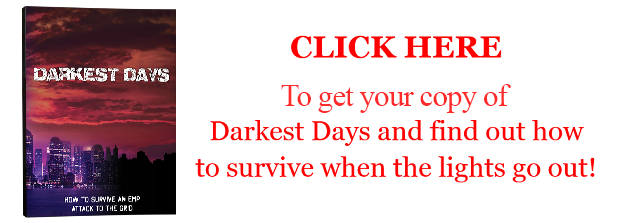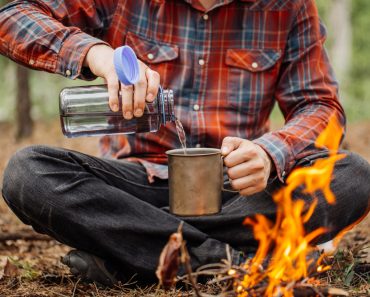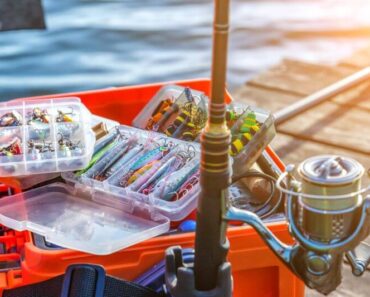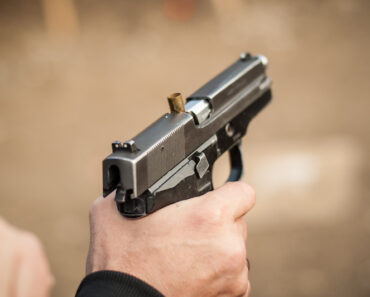The best place to be in an SHTF scenario is one where there’s no disaster at all. However, if a nationwide crisis does occur, some areas will be easier to survive in than others.
Having the right materials and knowledge will go a long way, but you can’t overlook the importance of location. Whether you’re looking for a place to move before an SHTF scenario or want somewhere to flee, you’ll need to know which states are safest. Here’s a closer look at what those are.
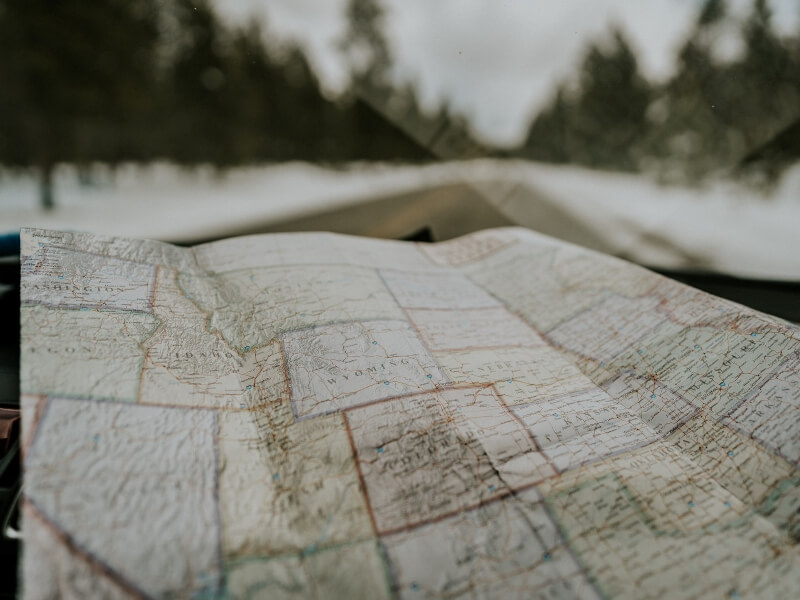
What Makes a Safe Place for an SHTF Scenario?
First things first, what makes some states safer than others? That may vary depending on the type of scenario on hand, but there are a few general factors to consider. One of the most important is population density. When disaster strikes, a crowded city is the last place you’ll want to be.
Higher population density means more people competing for the same resources, which could turn ugly in an SHTF scenario. Being closer to others will also be a disadvantage if disease is a concern. You generally have an 80% chance of getting sick if you’re next to someone with a contagious disease. Large cities will also be primary targets in a war or terrorist attack.
Another factor to consider is resource availability. That includes things you need to live, like food and water, as well as available land to cultivate before things go south. Some states may have plenty of resources, so it may be harder to accumulate them due to high prices or competition.
Being able to grow your own food and raise animals is a similar advantage to look for, so pay attention to an area’s environment and seasonality. Along those lines, you’ll want to favor places with more relaxed homesteading laws. Fewer regulations will help you create a safe place before an SHTF scenario.
Gun laws, natural disasters, wildlife and crime levels are also important. With these factors in mind, here are the 10 safest states for an SHTF scenario.
1. Montana
Montana is possibly the best state to live in during an SHTF scenario. Resting in the middle of the Rocky Mountains, Montana is far from any major cities and has some of the lowest population density in the country. Loose regulations and plenty of affordable land also make it an ideal place to start homesteading.
Montana is relatively unpopulated, and so are the states around it. As a result, fewer people will rush to the area when disaster strikes. The short growing season and cold winters may prove challenging, but if you can manage that, this is one of the best places to ride out the storm.
2. Idaho
Montana’s next-door neighbor, Idaho, is another excellent choice. The state shares many of the same advantages as Montana, including low land prices, loose gun and homesteading restrictions, abundant natural resources, and low population density. Idaho also has fairly low taxes, helping you save money if you decide to homestead there before an SHTF scenario.
Idaho has the ideal weather for growing crops like potatoes to keep you and your loved ones fed. However, you’ll have to deal with relatively harsh winters. Idaho is also closer to the coast, so it may bring more evacuees from other areas.
3. Texas
Texas has long been a favorite state for preppers, and it’s easy to see why. Its massive space means land is cheap, it has a long growing season and it has some of the loosest regulations of any state. Texas is famous for its independent, self-sustaining culture, so your chances of running into trouble while homesteading are low.
Apart from a few major cities, Texas has a fairly sparse population density. Just remember to keep your distance from Austin and Houston while avoiding landing in the desert.
4. Ohio
Like Texas, Ohio has a couple of major cities you’ll want to avoid. However, apart from those areas, the state has a reasonably low population density, as does much of the surrounding area. Low crime rates, relatively affordable land and few legal restrictions also make the Buckeye State an ideal location.
Ohio may have a shorter growing season than some other states, but it’s still fairly fertile. Look no further than its high Amish population as evidence of how easy it is to live off the land here.
5. Alaska
Alaska is the largest state in the union, so there’s plenty of available land and a low population density. Since it’s far from the contiguous states, it’s not near any major cities that would be prime targets or centers of disaster. It also boasts a strong homesteading culture, low crime and relaxed laws.
The only reason Alaska doesn’t rank as the No. 1 safest place in the U.S. is its climate. This far northern state has the harshest winters in the country, and you’ll face considerable limitations in the kinds of crops you can grow. That said, the wildlife is abundant and diverse enough to live off the land without a productive farm.
6. Tennessee
Tennessee is a less environmentally harsh state to live in during an SHTF scenario. The area is far smaller and more densely populated than Alaska, but it’s not necessarily crowded and the land is cheap. Tennessee also has relaxed gun and homesteading laws and a long growing season.
Tennessee’s climate is ideal for growing crops, and its forests provide plenty of hunting and fishing opportunities. The only downside is that there are a few large cities in the state and nearby. As a result, you may run into more people here than in some other areas.
7. Maine
Most of the states on this list are fairly large, which usually means more available land and less dense populations. That’s not the case with Maine, but it still has a relatively sparse population and affordable land prices. Abundant natural resources and relatively untouched forests also make an ideal prepping environment.
Those who choose Maine should go to the northern part of the state. You’ll run into larger cities and more densely populated areas in the south. Keep in mind that while the state itself has a low population density, some nearby areas don’t, which could be an issue.
8. North Carolina
North Carolina is another safe option for when SHTF. The state has a temperate climate ideal for growing crops and avoiding extreme weather, and regulations are fairly loose in the area. North Carolina’s woods and mountains also provide many natural resources while the land remains relatively affordable.
North Carolina has a strong prepper culture and a long growing season. Unfortunately, it’s closer to some larger cities and more densely populated states than others, so more people may flee here during an SHTF scenario.
9. Oregon
Like other northwestern states on this list, Oregon has wide open spaces full of wildlife resources. Its climate is also a bit more temperate than some other more northern states, and its gun and homesteading regulations are fairly relaxed. Low crime rates and affordable land also appeal to preppers in the area.
The major downside to Oregon is its proximity to California. Many people from this densely populated neighbor may move up in an SHTF scenario. Oregon doesn’t have many people, especially compared to California, but it has more than others on this list.
10. Vermont
Vermont is one of the least populated states in the union, although its small land mass counteracts that slightly. It’s also rich in natural resources, being home to thriving forests and waterways. Its regulations aren’t the loosest in the country, but there’s enough wiggle room for comfortable prepping.
Like other northern states, Vermont has long, cold winters that you’ll have to contend with. It’s also close to some more densely populated states like New York and Massachusetts, so it may be a popular spot in an SHTF scenario. Still, compared to most states, it’s one of the best options to live during a disaster.
Other Factors to Consider
These 10 states represent the safest places to live during an SHTF scenario. However, as you plan and decide where you’d want to settle, remember that location isn’t the only factor to consider.
No matter where you end up, you’ll need the tools and knowledge necessary to make the most of the land. Brush up on your survival skills, stock up on food and resources, and remember the six enemies of long-term storage to keep them safe. You should stand a good chance if you prepare in these areas well enough, regardless of the state you’re in.
Finally, remember that these rankings may change depending on the situation. The types of SHTF scenarios and the areas they arise from will make different states more or less safe. Have a plan, but be ready to change it if necessary.
Find the Best Place to Hunker Down When SHTF
The best SHTF plans are comprehensive. As you gather information and resources, make sure you determine where you’ll go in different scenarios. These 10 states provide plenty of options for safe living in extreme situations. Hopefully, you’ll never need to act on this, but it’s better to be prepared than to be caught off-guard.

